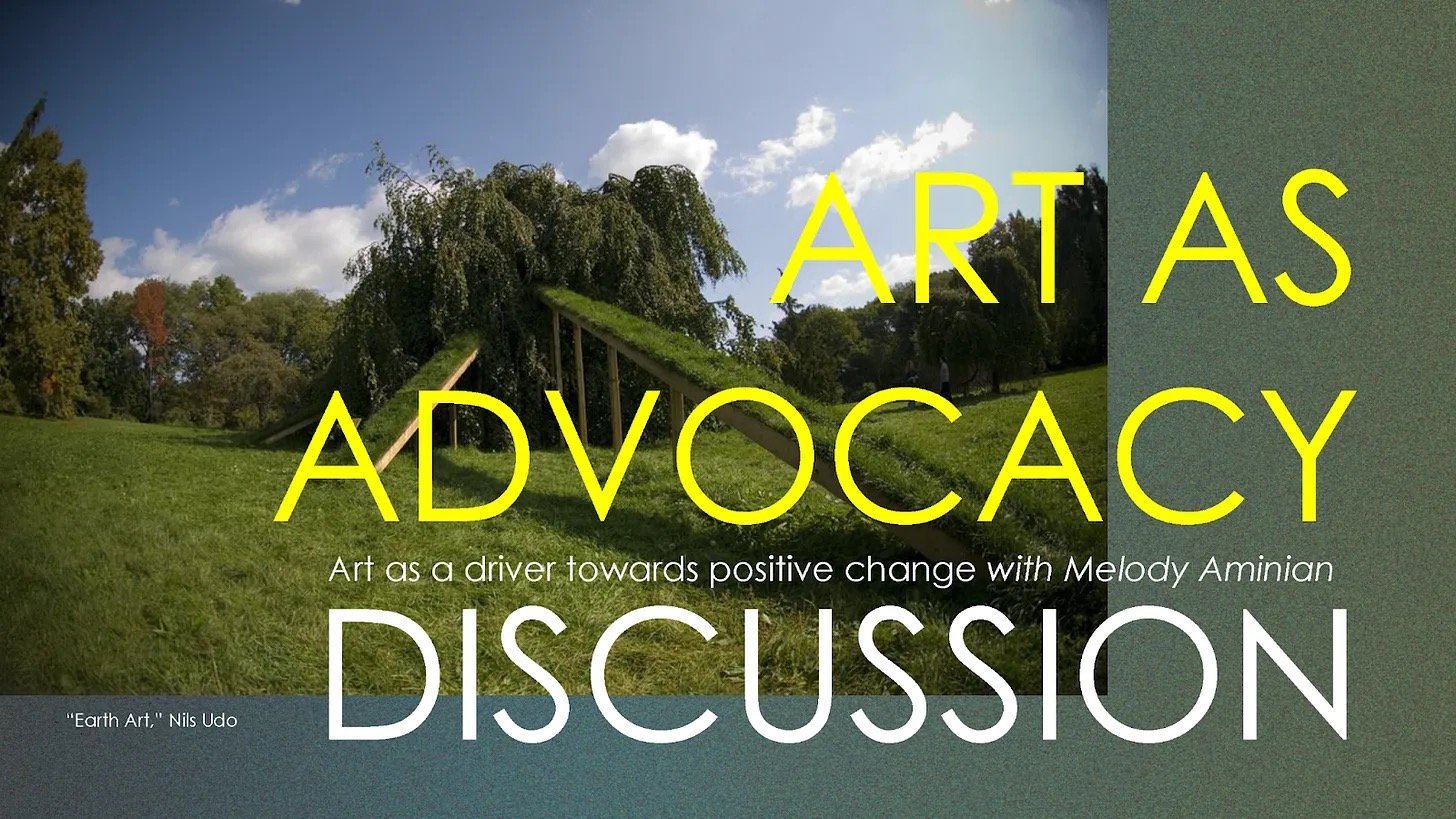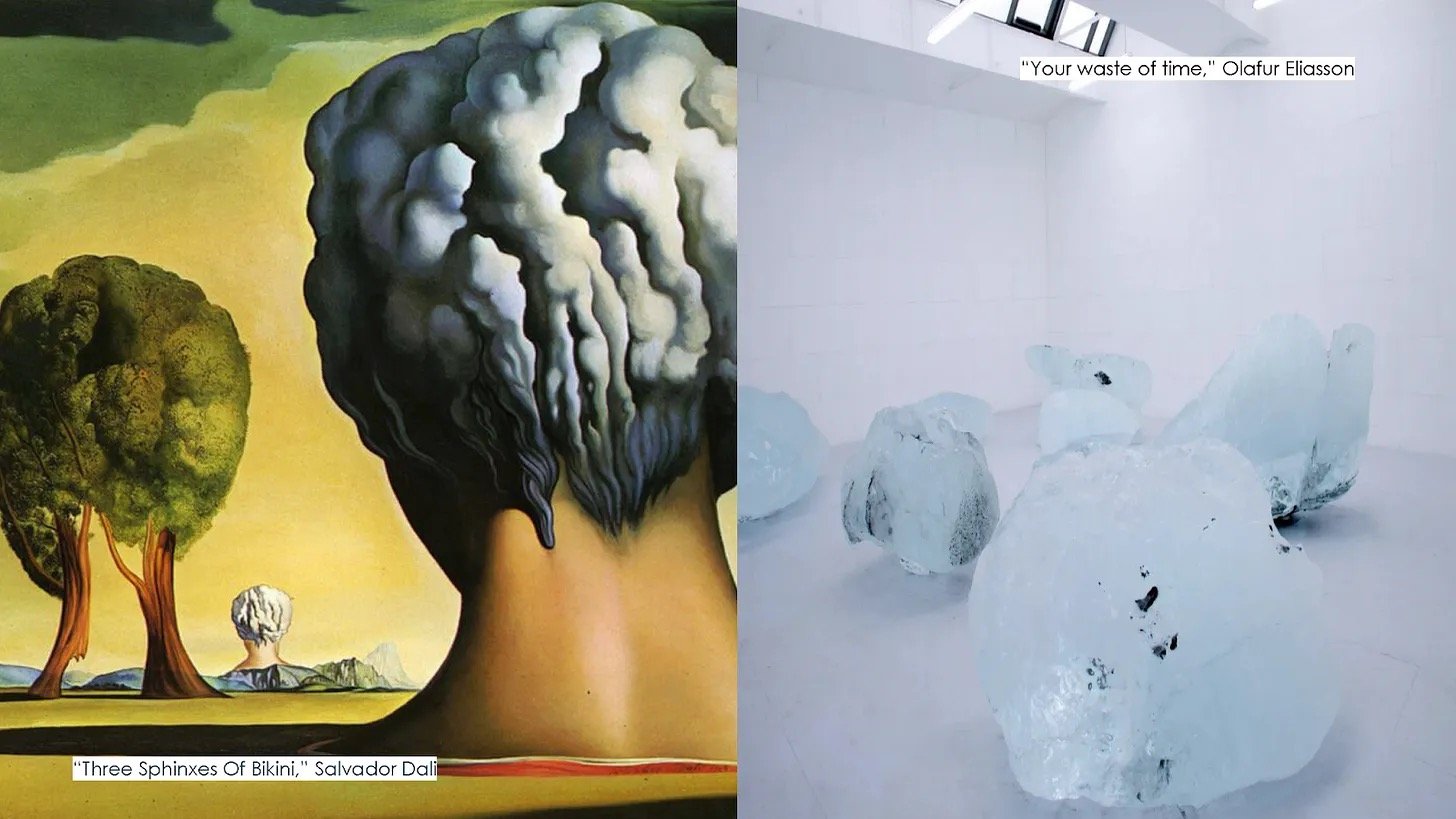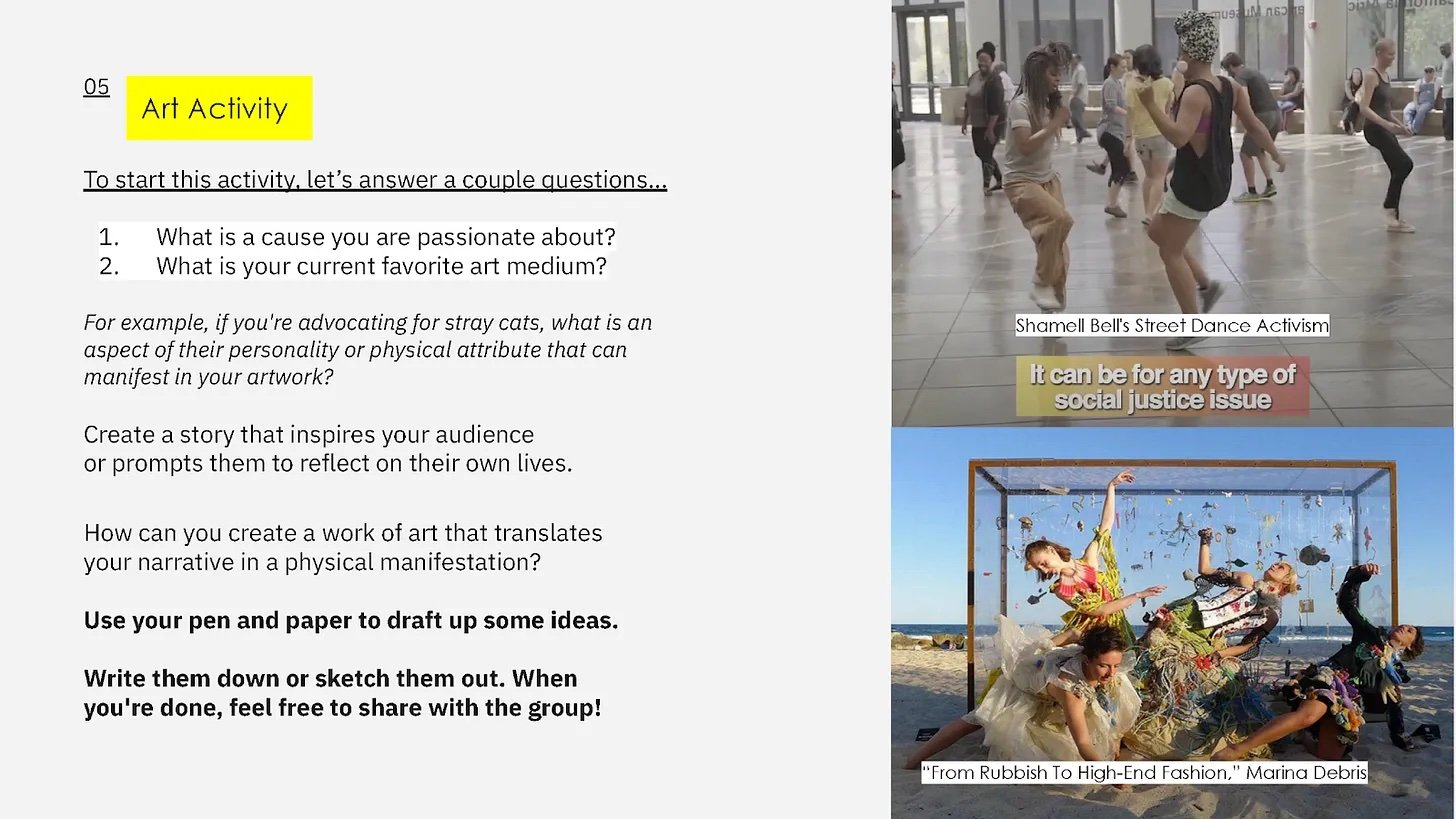Art As Advocacy
Art’s Effect on Culture
There is a quote by American actor/director, Ossie Davis stating, “Any form of art is a form of power; it has impact, it can affect change - it can not only move us, it makes us move.”
His statement speaks to the power of art within one's self as well as in the outward world.
Art draws out the complexity of humanness to the forefront. I’m sure there is a piece of art that has helped us confront certain emotions or create a transformative experience.
Art brings new perspective. It spreads awareness. It informs. It brings us together. It reveals our beauty.
So together let’s ask the question, what art can you think of that has been censored or banned due to its frankness on current social issues?
An example of this is Norman Rockwell’s painting, The Problem We All Live With, which shows Ruby Bridges, a little black girl being escorted by federal marshalls into what was supposed to be the first day of a desegregation elementary school. Yet, white parents resisted this change when they pulled out their kids from William Franz Elementary School in New Orleans (Pastan, 2022).
Rockwell’s artwork was published in Look Magazine, addressing both the progress and resistance to social change attributed to the Civil Rights Movement.
Art + Advocacy
Another couple of examples of artistic advocacy explore the emotional effects of war. Girl with Balloon by Banksy comments on the loss of innocence and hopeful dreams as the girl reaches out towards a fleeting red balloon in the midst of war.
First seen under the London Waterloo Bridge, Banksy clearly sheds light on the emotional turmoil of the Syrian refugee crisis.
Accompanying this message is Pablo Picasso’s famous depiction of the Spanish Civil War, Guernica. Art historian Paloma Leal relates the muted tones and intricate motifs to the immense human suffering experienced and foreshadowed for WWII (2019). Both categories of human and animal share the expressions of grief and pain: a grief-stricken mother, a daggered horse, and fire encapsulating the town.
The storytelling in the simplicity of Banksy’s street art and the details in Picasso’s depictions of tragedy both effectively illustrate the horrors of war. These artworks allow society to reflect on their learned behaviors and problematic beliefs. They inspire change of character and heart that ultimately reverberates to the expanse of human life.
Environmental Art
For years, communities have suffered through the aftermath of war, but in another sphere the climate crisis has also done its number on local habitats.
Environmental art has been and will continue to fight against human ignorance and failure to take action on the many injustices surrounding climate change.
Earlier films like, The Day After Tomorrow (Emmerich) warn the public about the urgency of climate action. That tomorrow is not for granted and the time to enact change is right now.
It’s astounding that this film was released over a decade ago and the gravity of public concern and responsibility is just now picking up virality.
Environmental Literacy
So let’s begin with the meaning of environmental literacy and its importance around the topic. Environmental literacy refers to the knowledge, skills, and understanding needed to make informed decisions about the environment, including the ability to analyze environmental issues, understand the relationship between humans and natural systems, and take responsible actions to protect and sustain the planet for future generations.
Writer, Muzhinga Kankinda emphasizes, “The beauty and diversity of nature, helps us appreciate its presence as well as respect the rights and needs of all living things including ourselves, and support conservation efforts.”
By experiencing and appreciating nature, we develop a deeper understanding of its value, which in turn encourages us to respect not only the natural world but also all living creatures, including ourselves.
The recognition of nature's interconnectedness with all life leads to a sense of responsibility for its protection.
Environmental Art vs. Land Art
So let’s get into the question, what is the difference between environmental art versus land art?
Land Art: Understanding Ourselves Through Nature
Contemporary Expressionist painter, Jelena Martinović describes land art as, “using land and nature as a medium for self-expression or to explore art ideas or the beauty of nature.” This style of artwork certainly can encourage folks to appreciate the natural world which inspires them to advocate for their local habitat, but it is not a direct call out to how human presence has altered natural spaces.
Land artist, Tanya Preminger’s states, “My purpose is to express the immaterial essence of things in physical stuff: to make tangible the universal essence of the creation.” Her installation called Air Loop speaks to her aim to physically demonstrate the motion or aliveness of nature.
In another direction, artist of the Seven Magic Mountains, Ugo Rondinone describes his sculpture as “elicit[ing] continuities and solidarities between human nature, artificial and natural.” Randnone’s artwork displays humanity’s intervention and impact on nature.
Revered American poet, Mary Oliver asks in her poem, Swan whether the experience of beauty has led to a deeper understanding of its purpose and whether it has prompted a meaningful change. It's about the potential of beauty to move us, to make us reconsider our place in the world, and to inspire a change in how we approach life.
By observing the natural world, like the swan in Oliver’s poem, not only does she invite nature to deepen humankind’s ties to the flora and fauna, but to question the beauty and fragility of life, as well as its unpredictability and transformative journey.
Environmental Art: Our Call to Advocacy
After WWII, America denoted 23 nuclear tests at the Micronesians Bikini islands. Reflecting on this event, Salvador Dali’s painting, Three Sphinxes of Bikini shows one head, one tree and one nuclear mushroom. The head may represent humanity, while the tree represents nature and the mushroom cloud represents destruction. The tree was the one closest to the explosions, then after that the head, which could translate to the impact of war on nature is far greater than the impact on humans.
Why is this painting different from Mary Oliver’s poem or Preminger’s installation? It directly questions the actions of humanity and how it has negatively afflicted nature and its resources.
There’s another interactive work of art by Icelandic-Danish artist, Olafur Eliasson titled Your waste of time, bringing us to touch the ice with our hands, contacting the earth.
He says, “We take away time from the glacier by touching it. Suddenly I make the glacier understood to me, its temporality. It is linked to the time the water took to become ice, a glacier. By touching it, I embody my knowledge by establishing physical contact. And suddenly we understand that we do actually have the capacity to understand the abstract with our senses. Touching time is touching abstraction.”
Let’s dive into Eliasson’s statement: He acknowledges how the effects of global warming have melted the glaciers from 1200 AD creating a ripple of destruction to our ecological systems and humanity’s ethical responsibility with that truth.
Art Activity
Ask yourself…
What is a cause you are passionate about? What is your current favorite art medium?
For example, if you're advocating for stray cats, what is an aspect of their personality or physical attribute that can manifest in your artwork?
Create a story that inspires your audience or prompts them to reflect on their own lives. How can you create a work of art that translates your narrative in a physical manifestation? Use your pen and paper to draft up some ideas. Write them down or sketch them out. When you're done, feel free to share!
In conclusion, art serves as a powerful catalyst for cultural and societal change. Whether it addresses social justice, the horrors of war, or the urgency of environmental preservation, art has the ability to provoke deep emotional responses and inspire meaningful action.
Through both environmental and land art, artists challenge our perspectives, question our behaviors, and encourage us to reflect on our relationship with the world around us. By harnessing the power of art as advocacy, we are reminded that creative expression can be a potent tool for raising awareness, sparking conversations, and ultimately driving positive change in society.
References
“SEVEN MAGIC MOUNTAINS,” by UGO RONDINONE, ENLISTS NEVADANS to BRING MASSIVE PUBLIC ART INSTALLATION to the DESERT.” Seven Magic Mountains, sevenmagicmountains.com/press_release/seven-magic-mountains-by-ugo-rondinone-enlists-nevadans-to-bring-massive-public-art-installation-to-the-desert/.
Banksy Explained. “Girl with Balloon: From Graffiti to Art History Icon.” Banksy Explained, 2021, banksyexplained.com/issue/girl-with-balloon-graffiti-legend/.
Colburn, Nadia. Swan by Mary Oliver for 2021. nadiacolburn.com/swan-by-mary-oliver-for-2021/.
Leal, Paloma Esteban. “Guernica.” Museoreinasofia.es, Museo Nacional Centro de Arte Reina Sofía, 5 Apr. 2019, www.museoreinasofia.es/en/collection/artwork/guernica.
Pastan, Amy. “Norman Rockwell + the Problem We All Live With.” Kennedy-Center.org, 31 Jan. 2022, www.kennedy-center.org/education/resources-for-educators/classroom-resources/media-and-interactives/media/visual-arts/norman-rockwell--the-problem-we-all-live-with/.
Samaroo, Sunny. “What Is the Meaning Behind the Seven Magic Mountains?” MaxTour, 20 Dec. 2023, www.maxtour.co/what-is-the-meaning-behind-the-seven-magic-mountains/. Accessed 18 Feb. 2025.
“Three Sphinxes of Bikini, 1947 by Salvador Dali.” Www.dalipaintings.com, www.dalipaintings.com/three-sphinxes-of-bikini.jsp.
“Your Waste of Time • Artwork • Studio Olafur Eliasson.” Olafureliasson.net, 2020, olafureliasson.net/artwork/your-waste-of-time-2006. Accessed 18 Feb. 2025.











